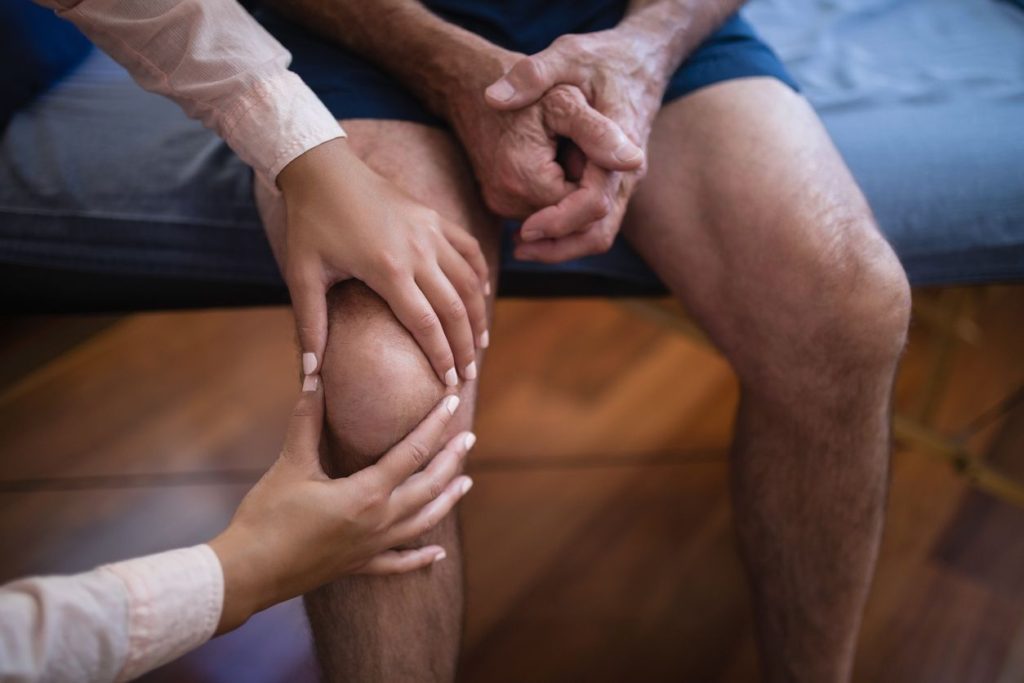
Irradiation with NIR light promotes nerve regeneration via enhancing oxidative processes on the mitochondria. Its bio-stimulating effect have been shown to help the following: wound healing, bone repair, cell growth, and reducing inflammation. An example of this is that red light has even been shown to help heal nipple trauma in breastfeeding women (1). In a small study of five individuals with wounds, all achieved full healing, control of any infection and control of any discomfort. The treatment time lasted one to eight weeks, depending on the wound, and a LED-LLLT system with 830 nm of light, with 100 nW of power was used. It was considered that the LLLT considerably accelerated all of the wound healing, regardless of wound type. It was also considered easy to use, well tolerated by all patients, and pain free (15).
Light therapy has successfully been used for pain management and healing, as well as other ailments. For instance, it has been used successfully to treat arthritis, to increase blood flow, and wound healing time, and even to improve endorphin levels (83). In one study, back pain was proven to be reduced by 50% in, after seven weeks of using an infrared emitting belt with light in the spectrum of 800 nm to 1200 nm. This was in comparison to a placebo group, which reported a 15% reduction in pain. This type of light is protective against ultraviolet light as it has an antioxidant effect (83). In another study, on knee osteoarthritis, 18 subjects were given 12 sessions of low level light therapy, at three a week, for four weeks. The device used a pulse radiation mod with wavelengths varying between of 810 nm and 50 nW power to 890 nm, with 30 nW. the results showed a significant reduction in nocturnal/nighttime pain and pain when walking or going up stairs, there was a significant reduction in these factors, as well as in measurements of: knee circumference, distance between hip and heel, and knee to horizontal hip to heel distance (14).
Light therapy can help treat diabetic peripheral neuropathy (the disease or dysfunction of peripheral nerves, causing numbness or weakness). It does this by improving plantar sensitivity, or sensitivity to touch of the plantar area of the food, which is usually decreased in diabetics. Light therapy was shown to help with (short-term) improvements to tactile sensitivity (16). It has also been used, in conjunction with muscle stretching exercise, to treat myofascial trigger points. It (830 m) also helps improve circulation and joint range of motion, pressure sensitivity, and pain in patients with osteoarthritis of the knee (10).
Light therapy to reduce inflammation: Low level laser therapy has been used successfully to lower inflammation in muscle and sub-plantar tissues as well as edema or swelling (17). This is important as inflammation causes pain as well as damage to tissues and increases the likelihood of developing inflammation related problems (depression, cancer, heart disease, arthritis, diabetes, thyroid problems etc.). When the skin is exposed to near infrared and red wavelengths the skin cells’ mitochondrial chromophores absorb the light photons (13). This leads to many signaling pathways in the nervous system being stimulated (including stem cells, which repair tissue damage) as well as the transport of electrons in the cells, the release of ATP or adenosine triphosphate nitric oxide, an increase in blood flow, and an increase in the production of reactive oxygen species (13). All of this avoids tissue damage, reduces pain and inflammation and increases healing and damage repair within tissues and nerve cells. It is now thought that red light specifically can modulate cytokines from cells, including macrophages, lowering inflammation (18).
Inflammation is associated with osteoarthritis or OA, it also causes degeneration of articular tissue. This is as OA triggers PG or prostaglandin E2 and pro-inflammatory cytokines, types of inflammatory markers. PBMT or photo-bio-modulation therapy, a type of low level light therapy, has been found to be more effective in moderating inflammatory process of OA then drug therapy, NSAID or topical non-steroidal anti-inflammatory drugs, and physical exercise (18).
Besides being about to treat OA related inflammatory indicators or mediators (cytokines TNF-a and CINC-1), it can help treat OA in the following ways: reduce the protein and gene expression of bradykinin receptors (B1 and B2), associated with pain, and acute and chronic inflammation, and increase the stimulus response threshold of pressure in an experimental model of acute osteoarthritis (19). In this way it can help treat OA related increased sensitivity to pain, called hyperalgesia.
References can be found at: http: https://lifeisbeautifullifecoach.com/light-therapy-an-overview/
This information is for educational purposes only. Please consult a qualified healthcare provider before trying anything mentioned above.
The information on this site is for educational and informational purposes only. It is not to take the place of medical advice or treatment. Seek out a qualified health care provider if you have questions or need help. Dr. Grant is not responsible for any possible health consequences of anyone who follows or reads the information in this content. Everyone, but especially those taking medication (over the counter or prescription) should talk with a physician before undertaking any changes to their lifestyle or diet (including taking supplements).